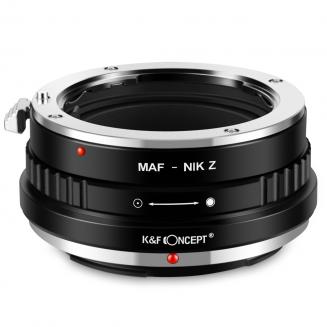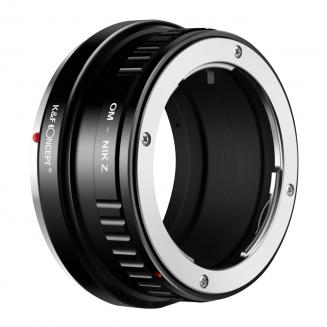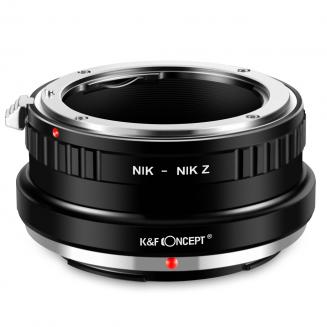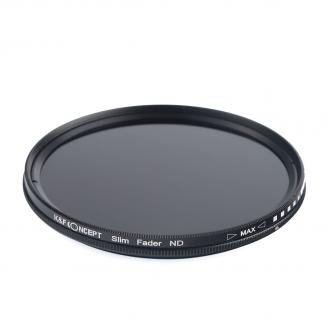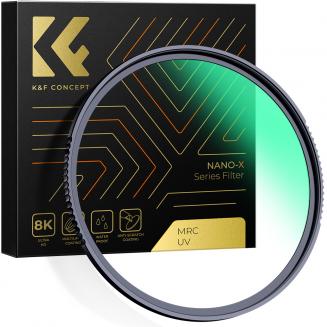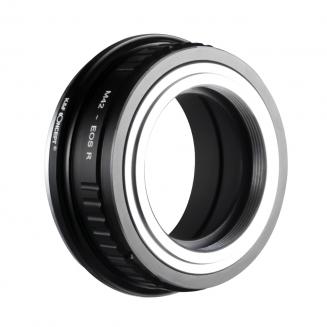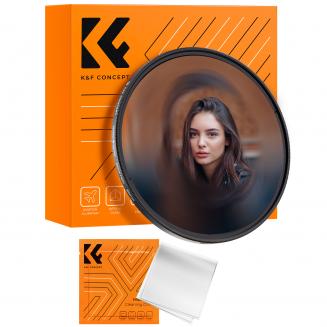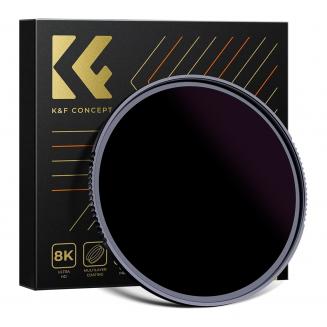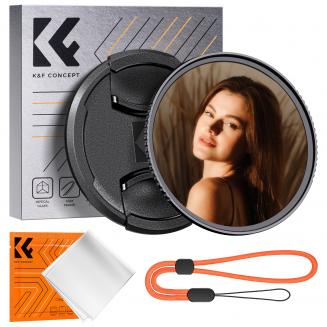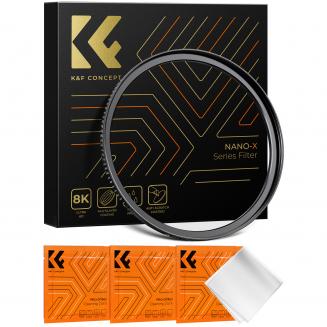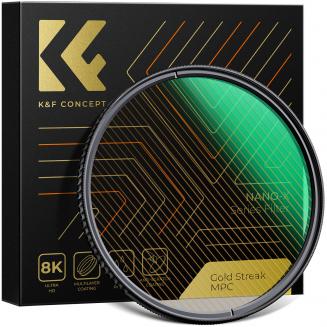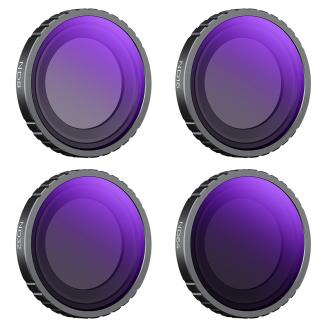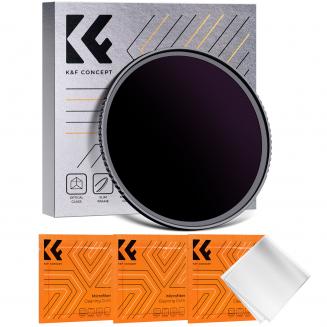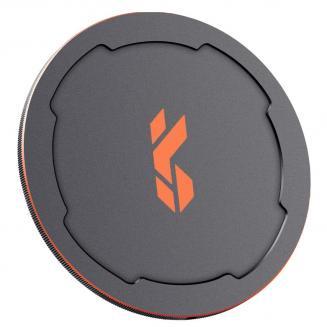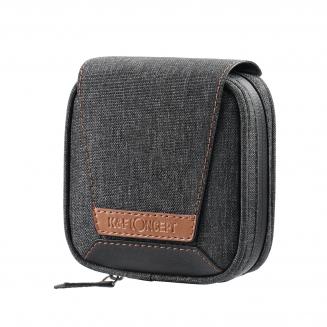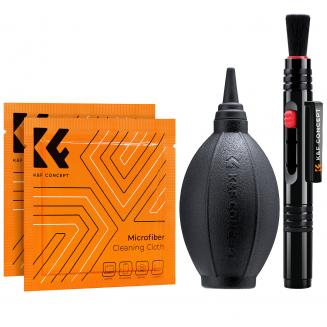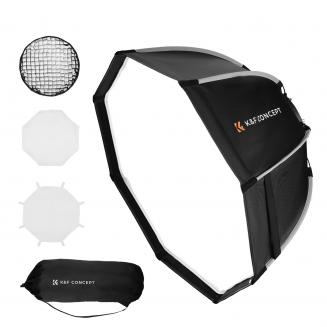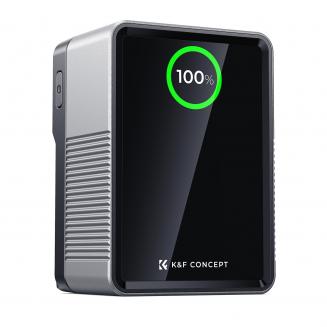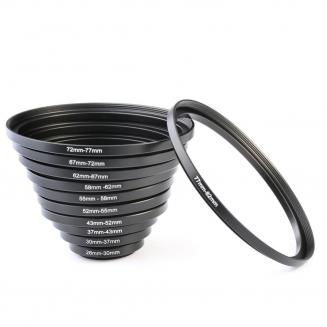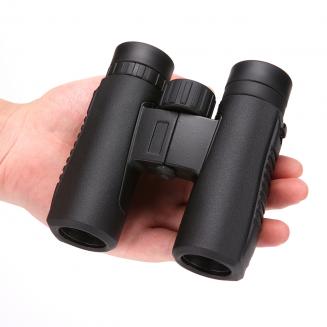
Manual focus
Infinity focus
Copper construction
Precise alignment
Red dot
Easy installation
Lens compatibility
Cost-saving
High quality
Compact design
-Smooth surface for effortless mount, Made of copper.
-This adapter fits Minolta/Sony AF A mount lens to Nikon Z6 Z7 mount camera body.
-Full manual operation, manual focus, infinity focus allowed.
-Red dot identification, precise alignment, easy to install and disassemble.
-If your camera indicated "lens is not properly installed", please modify the camera menu settings. Usually called the release the shutter the lens is not installed", you can modify the settings to allow. Specifically refer to the camera manual.
-This adapter fits Minolta/Sony AF A mount lens to Nikon Z6 Z7 mount camera body.
-Full manual operation, manual focus, infinity focus allowed.
-Red dot identification, precise alignment, easy to install and disassemble.
-If your camera indicated "lens is not properly installed", please modify the camera menu settings. Usually called the release the shutter the lens is not installed", you can modify the settings to allow. Specifically refer to the camera manual.
Original Price
$93.99
Discounted Price
$48.99
Total Save
$45.00
Olympus OM
Nikon Z6 Z7
Smooth surface
Copper material
Manual operation
Manual focus
Infinity focus
Red dot
Precise alignment
Easy installation
-Smooth surface for effortless mount, Made of copper.
-This adapter allows you to use the Olympus OM lens to Nikon Z6 Z7 mount camera body.
-Full manual operation, manual focus, infinity focus allowed.
-Red dot identification, precise alignment, easy to install and disassemble.
-If your camera indicated "lens is not properly installed", please modify the camera menu settings. Usually called the release the shutter the lens is not installed", you can modify the settings to allow. Specifically refer to the camera manual.
-This adapter allows you to use the Olympus OM lens to Nikon Z6 Z7 mount camera body.
-Full manual operation, manual focus, infinity focus allowed.
-Red dot identification, precise alignment, easy to install and disassemble.
-If your camera indicated "lens is not properly installed", please modify the camera menu settings. Usually called the release the shutter the lens is not installed", you can modify the settings to allow. Specifically refer to the camera manual.
Original Price
$87.99
Discounted Price
$45.99
Total Save
$42.00
Manual focus
Infinity focus
Copper material
Precise alignment
Easy installation
F mount compatible
Z mount support
Red dot guide
Aperture default
Vignetting correction
-Smooth surface for effortless mount, Made of copper.
-This adapter is compatible with Nikon F/AF AI AI-S Lens to Nikon Z6 Z7 mount camera body.
-Full manual operation, manual focus, infinity focus allowed.
-Red dot identification, precise alignment, easy to install and disassemble.
-If your camera indicated "lens is not properly installed", please modify the camera menu settings. Usually called the release the shutter the lens is not installed", you can modify the settings to allow. Specifically refer to the camera manual.
-This adapter is compatible with Nikon F/AF AI AI-S Lens to Nikon Z6 Z7 mount camera body.
-Full manual operation, manual focus, infinity focus allowed.
-Red dot identification, precise alignment, easy to install and disassemble.
-If your camera indicated "lens is not properly installed", please modify the camera menu settings. Usually called the release the shutter the lens is not installed", you can modify the settings to allow. Specifically refer to the camera manual.
Original Price
$87.99
Discounted Price
$45.99
Total Save
$42.00
Variable ND
Wide range
Easy compatibility
High transmittance
Metal sealing
Durable build
Lens protection
Easy cleaning
Universal fit
Optical precision
- Kit Includes: 77MM K&F Concept Filter Kit (ND2 to ND400) + Lens Cleaning Cloth
-NOTE: This kit is compatible with all 77mm lenses. Please verify your camera's lens thread size before ordering. Your camera's lens thread size will be marked somewhere on the lens barrel or printed underneath your lens cap. This number is always preceded by a "ø" (diameter) symbol
-Manufactured by a professional team for photography enthusiasts to provide a very exciting experience. 100% Satisfaction Guaranteed
-High quality product made of import optics glass and resin,top level of transmittance. Metal sealing ring instead of the plastic sealing ring, better tightness, avoids fall or loose
-Compatible with the CANON Rebel (T5i T4i T3i T3 T2i T1i XT XTi XSi SL1), CANON EOS (700D 650D 600D 550D 500D 450D 400D 300D 1100D 1000D 100D) with 77MM Lens wich include: EF 24-105mm f/4L IS USM, EF 17-40mm f/4L USM,EF 24-70mm f/4L IS USM, EF 24mm f/1.4L II USM
-NOTE: This kit is compatible with all 77mm lenses. Please verify your camera's lens thread size before ordering. Your camera's lens thread size will be marked somewhere on the lens barrel or printed underneath your lens cap. This number is always preceded by a "ø" (diameter) symbol
-Manufactured by a professional team for photography enthusiasts to provide a very exciting experience. 100% Satisfaction Guaranteed
-High quality product made of import optics glass and resin,top level of transmittance. Metal sealing ring instead of the plastic sealing ring, better tightness, avoids fall or loose
-Compatible with the CANON Rebel (T5i T4i T3i T3 T2i T1i XT XTi XSi SL1), CANON EOS (700D 650D 600D 550D 500D 450D 400D 300D 1100D 1000D 100D) with 77MM Lens wich include: EF 24-105mm f/4L IS USM, EF 17-40mm f/4L USM,EF 24-70mm f/4L IS USM, EF 24mm f/1.4L II USM
Original Price
$61.99
Discounted Price
$19.99
Total Save
$42.00
77mm Compatibility
10 Stops
Multi-Layer Coatings
Waterproof Design
Scratch Resistant
Super Slim
High Quality
Real Colors
Lightweight Frame
Anti-Reflection
-【Premium Quality】Solid ND Lens filter (NOT a variable nd)Made of high quality optical glass, no colour cast while providing solid 10 f-stop reductions and enabling longer exposures to capture the beauty of time and movement.
-【Keep Real colors】Adopted 28-Layer multi-resistant coating technology, the green coating helps effectively reduce filter surface reflection and the ghosting while making the filter anti-scratch, water repellent, oil and dust resistant.
-【Ultra Slim and Lightweight】Super slim and lightweight aluminum frame, maximum reduce impact on light and effectively avoid dark corner for wide-angle shooting.
-【Functions】ND1000 Filter Enables slow shutter speeds to be used to record movement in subjects such as waterfalls, providing a silky smooth affect to flowing water.
-【Choose the right size】This K&F ND1000 is compatible with all 77mm lenses. Please verify your camera's lens thread size before ordering. Your camera's lens thread size will be marked somewhere on the lens barrel or printed underneath your lens cap. This number is always preceded by a "Ø" (diameter) symbol. For example: Ø77=77mm lens thread size.
-【Keep Real colors】Adopted 28-Layer multi-resistant coating technology, the green coating helps effectively reduce filter surface reflection and the ghosting while making the filter anti-scratch, water repellent, oil and dust resistant.
-【Ultra Slim and Lightweight】Super slim and lightweight aluminum frame, maximum reduce impact on light and effectively avoid dark corner for wide-angle shooting.
-【Functions】ND1000 Filter Enables slow shutter speeds to be used to record movement in subjects such as waterfalls, providing a silky smooth affect to flowing water.
-【Choose the right size】This K&F ND1000 is compatible with all 77mm lenses. Please verify your camera's lens thread size before ordering. Your camera's lens thread size will be marked somewhere on the lens barrel or printed underneath your lens cap. This number is always preceded by a "Ø" (diameter) symbol. For example: Ø77=77mm lens thread size.
Original Price
$62.99
Discounted Price
$39.99
Total Save
$23.00
ND1000 Filter
10 Stops
Waterproof Coating
Scratch Resistant
Multi-Layer Coatings
Ultra Slim
Lightweight Frame
Real Colors
Wide-Angle Compatible
67mm Size
-【Premium Quality】Solid ND Lens filter (NOT a variable nd)Made of high quality optical glass, no colour cast while providing solid 10 f-stop reductions and enabling longer exposures to capture the beauty of time and movement.
-【Keep Real colors】Adopted 28-Layer multi-resistant coating technology, the green coating helps effectively reduce filter surface reflection and the ghosting while making the filter anti-scratch, water repellent, oil and dust resistant.
-【Ultra Slim and Lightweight】Super slim and lightweight aluminum frame, maximum reduce impact on light and effectively avoid dark corner for wide-angle shooting.
-【Functions】ND1000 Filter Enables slow shutter speeds to be used to record movement in subjects such as waterfalls, providing a silky smooth affect to flowing water.
-【Choose the right size】This K&F ND1000 is compatible with all 67mm lenses. Please verify your camera's lens thread size before ordering. Your camera's lens thread size will be marked somewhere on the lens barrel or printed underneath your lens cap. This number is always preceded by a "Ø" (diameter) symbol. For example: Ø77=77mm lens thread size.
-【Keep Real colors】Adopted 28-Layer multi-resistant coating technology, the green coating helps effectively reduce filter surface reflection and the ghosting while making the filter anti-scratch, water repellent, oil and dust resistant.
-【Ultra Slim and Lightweight】Super slim and lightweight aluminum frame, maximum reduce impact on light and effectively avoid dark corner for wide-angle shooting.
-【Functions】ND1000 Filter Enables slow shutter speeds to be used to record movement in subjects such as waterfalls, providing a silky smooth affect to flowing water.
-【Choose the right size】This K&F ND1000 is compatible with all 67mm lenses. Please verify your camera's lens thread size before ordering. Your camera's lens thread size will be marked somewhere on the lens barrel or printed underneath your lens cap. This number is always preceded by a "Ø" (diameter) symbol. For example: Ø77=77mm lens thread size.
Original Price
$49.99
Discounted Price
$31.99
Total Save
$18.00
ND1000 Filter
10 Stops
28 Coatings
Waterproof
Scratch Resistant
Ultra Slim
Lightweight Frame
Anti-Reflection
Wide-Angle Friendly
High Quality
-【Premium Quality】Solid ND Lens filter (NOT a variable nd)Made of high quality optical glass, no colour cast while providing solid 10 f-stop reductions and enabling longer exposures to capture the beauty of time and movement.
-【Keep Real colors】Adopted 28-Layer multi-resistant coating technology, the green coating helps effectively reduce filter surface reflection and the ghosting while making the filter anti-scratch, water repellent, oil and dust resistant.
-【Ultra Slim and Lightweight】Super slim and lightweight aluminum frame, maximum reduce impact on light and effectively avoid dark corner for wide-angle shooting.
-【Functions】ND1000 Filter Enables slow shutter speeds to be used to record movement in subjects such as waterfalls, providing a silky smooth affect to flowing water.
-【Choose the right size】This K&F ND1000 is compatible with all 58mm lenses. Please verify your camera's lens thread size before ordering. Your camera's lens thread size will be marked somewhere on the lens barrel or printed underneath your lens cap. This number is always preceded by a "Ø" (diameter) symbol. For example: Ø77=77mm lens thread size.
-【Keep Real colors】Adopted 28-Layer multi-resistant coating technology, the green coating helps effectively reduce filter surface reflection and the ghosting while making the filter anti-scratch, water repellent, oil and dust resistant.
-【Ultra Slim and Lightweight】Super slim and lightweight aluminum frame, maximum reduce impact on light and effectively avoid dark corner for wide-angle shooting.
-【Functions】ND1000 Filter Enables slow shutter speeds to be used to record movement in subjects such as waterfalls, providing a silky smooth affect to flowing water.
-【Choose the right size】This K&F ND1000 is compatible with all 58mm lenses. Please verify your camera's lens thread size before ordering. Your camera's lens thread size will be marked somewhere on the lens barrel or printed underneath your lens cap. This number is always preceded by a "Ø" (diameter) symbol. For example: Ø77=77mm lens thread size.
Original Price
$37.99
Discounted Price
$23.99
Total Save
$14.00
Ultra-violet protection
High-density glass
Japanese optical
Multi-layer coatings
Scratch resistant
Hydrophobic filter
True color
No vignetting
Ultra-slim frame
Telephoto clarity
-【Ultraviolet Protection】UV Filters protect your lens from dirt, scratches, fingerprints, and accidental damage. Reduce haze and improve contrast to your video and digital images by minimizing the amount of ultraviolet (UV) light.
-【Premium HD Glass】 High-Density sharp cut UV glass; Chemically enhanced optical glass is 4x stronger, made with Japanese optical glass.
-【NANOTEC】This UV filter with 28 multi-layer coatings, hydrophobic,scratch resistant . The 99.6% transmission, effectively reducing the reflection came from both the ground and filter itself, ensuring the true color of images.
-【Telephotos Lens No Vignetting】K&F Concept HD uv filter frame only 3.3mm with double side polishing technology no vignetting and the images still clarity even on telephotos lens.
-【Note】Please verify your camera's lens thread size before ordering. Your camera's lens thread size will be marked somewhere on the lens barrel or printed underneath your lens cap. This number is always proceeded by a "Φ" (diameter) symbol. For example: Φ58 = 58mm lens thread size.
-【Premium HD Glass】 High-Density sharp cut UV glass; Chemically enhanced optical glass is 4x stronger, made with Japanese optical glass.
-【NANOTEC】This UV filter with 28 multi-layer coatings, hydrophobic,scratch resistant . The 99.6% transmission, effectively reducing the reflection came from both the ground and filter itself, ensuring the true color of images.
-【Telephotos Lens No Vignetting】K&F Concept HD uv filter frame only 3.3mm with double side polishing technology no vignetting and the images still clarity even on telephotos lens.
-【Note】Please verify your camera's lens thread size before ordering. Your camera's lens thread size will be marked somewhere on the lens barrel or printed underneath your lens cap. This number is always proceeded by a "Φ" (diameter) symbol. For example: Φ58 = 58mm lens thread size.
Original Price
$33.99
Discounted Price
$21.59
Total Save
$12.40
High-quality material
Accurate alignment
Manual focus
Durable design
Infinity focus
Red dot mark
Full manual control
Diaphragm control
Wide compatibility
Easy installation
-【 Material】High-quality copper and aluminum alloy ;High precision and durable.
-【Features】Red dot mark, accurate alignment, Install and remove smoothly.
-【Manual Focus】Full manual control, Diaphragm control of the lens is set manually. Supports manual control, manual focus, manual exposure and focus to infinity.
-【Please note】 when using the adapter ring for the first time, please turn on the “release shutter w/o lens”option in the menu, otherwise the adapter lens will not be recognized.
-【Pre-purchase Verification】 Please ensure your lens mount and camera mount before purchase in case of unnecessary returning. We are here for help if you have any question about adapters.
-【Features】Red dot mark, accurate alignment, Install and remove smoothly.
-【Manual Focus】Full manual control, Diaphragm control of the lens is set manually. Supports manual control, manual focus, manual exposure and focus to infinity.
-【Please note】 when using the adapter ring for the first time, please turn on the “release shutter w/o lens”option in the menu, otherwise the adapter lens will not be recognized.
-【Pre-purchase Verification】 Please ensure your lens mount and camera mount before purchase in case of unnecessary returning. We are here for help if you have any question about adapters.
Original Price
$87.99
Discounted Price
$45.99
Total Save
$42.00
Variable ND
Imported Glass
No Color Cast
Self-Lock Frame
No X Cross
Nano Coatings
Waterproof Design
Scratch Resistant
Ultra Slim
Easy Installation
-【Imported AGC Glass】Variable nd filter made by importing AGC glass, first-class filter material balancing the color batter, with no color cast and no effect for the image clarity and sharpness.
-【Self-Lock Frame, No 'X’ cross】Say goodbye to the "X" cross on images, K&F Concept utilizes cutting-edge technology to perfectly avoid the common "X" issue of variable nd filter on wide-angle and telephoto lenses.
-【NANOTEC】K&F Concept optical engineers developed multi-layer nanometer coatings (total of 38), waterproof, scratch-resistant, and anti-glaring, protecting the valued lens and presenting high-quality photos.
-【Ultra Slim Frame Avoid Vignetting】7.4mm Ultra-slim frame design utmost avoid the wide-angle vignetting (support 38mm focal length no vignetting). CNC-non-slip design helps install and remove the filter easily.
-【NOTE】This filter kit is compatible with all 72mm lenses. Please verify your camera's lens thread size before ordering. The number is always preceded by a "ø" (diameter) symbol. For the 72mm nd filter, the lens cap/hood size should be 77mm.
-【Self-Lock Frame, No 'X’ cross】Say goodbye to the "X" cross on images, K&F Concept utilizes cutting-edge technology to perfectly avoid the common "X" issue of variable nd filter on wide-angle and telephoto lenses.
-【NANOTEC】K&F Concept optical engineers developed multi-layer nanometer coatings (total of 38), waterproof, scratch-resistant, and anti-glaring, protecting the valued lens and presenting high-quality photos.
-【Ultra Slim Frame Avoid Vignetting】7.4mm Ultra-slim frame design utmost avoid the wide-angle vignetting (support 38mm focal length no vignetting). CNC-non-slip design helps install and remove the filter easily.
-【NOTE】This filter kit is compatible with all 72mm lenses. Please verify your camera's lens thread size before ordering. The number is always preceded by a "ø" (diameter) symbol. For the 72mm nd filter, the lens cap/hood size should be 77mm.
Original Price
$87.99
Discounted Price
$55.99
Total Save
$32.00
New Arrival
Related Accessories
$19.99
About Us
ABOUT KENTFAITH
-Enjoy Your Selected Digital Life
KentFaith as an end-consumer service provider, kentFaith is committed to improving consumer experience and providing consumers with the most suitable products. We have 150 patents and have won international product awards. We are popular in 200 countries and regions. We have been listening to the real needs of users and are committed to creating an ideal choice that meets your inner expectations and providing you with a convenient and practical exclusive shopping page.
20K + Products
56+
Countries and Regions
20Million+
Customers
150+
Patents
260+
Commercial Partners
1200+
Online and offine Retailers
20000+
Products
More Related Pages
$19.99 - $48.99
$23.99 - $48.99
$19.99 - $48.99
$19.99 - $55.99
$19.99 - $55.99
$19.99 - $55.99
$23.99 - $48.99
$21.59 - $69.99
$21.59 - $69.99
$29.99 - $48.99
$51.99 - $106.99
$42.99 - $136.99
Related Feature
Sigma 70-300mm Dg Os Lens Canon Mount
Sigma Mc-11 Lens Adapter Canon To E-mount
Specifications Of The Canon Ef Lens Mount
Super Telephoto Lens Weights For Canon Mount
T2 T Mount Lens To Canon Eos
Tamron Canon Lens E Mount Adaptor
Tamron Canon Mount Lens
Tamron Lens T Mount To Canon Ef
Tamron Lens Canon Mount Price In India
Telephoto Lens For Full-frame Canon Mount

